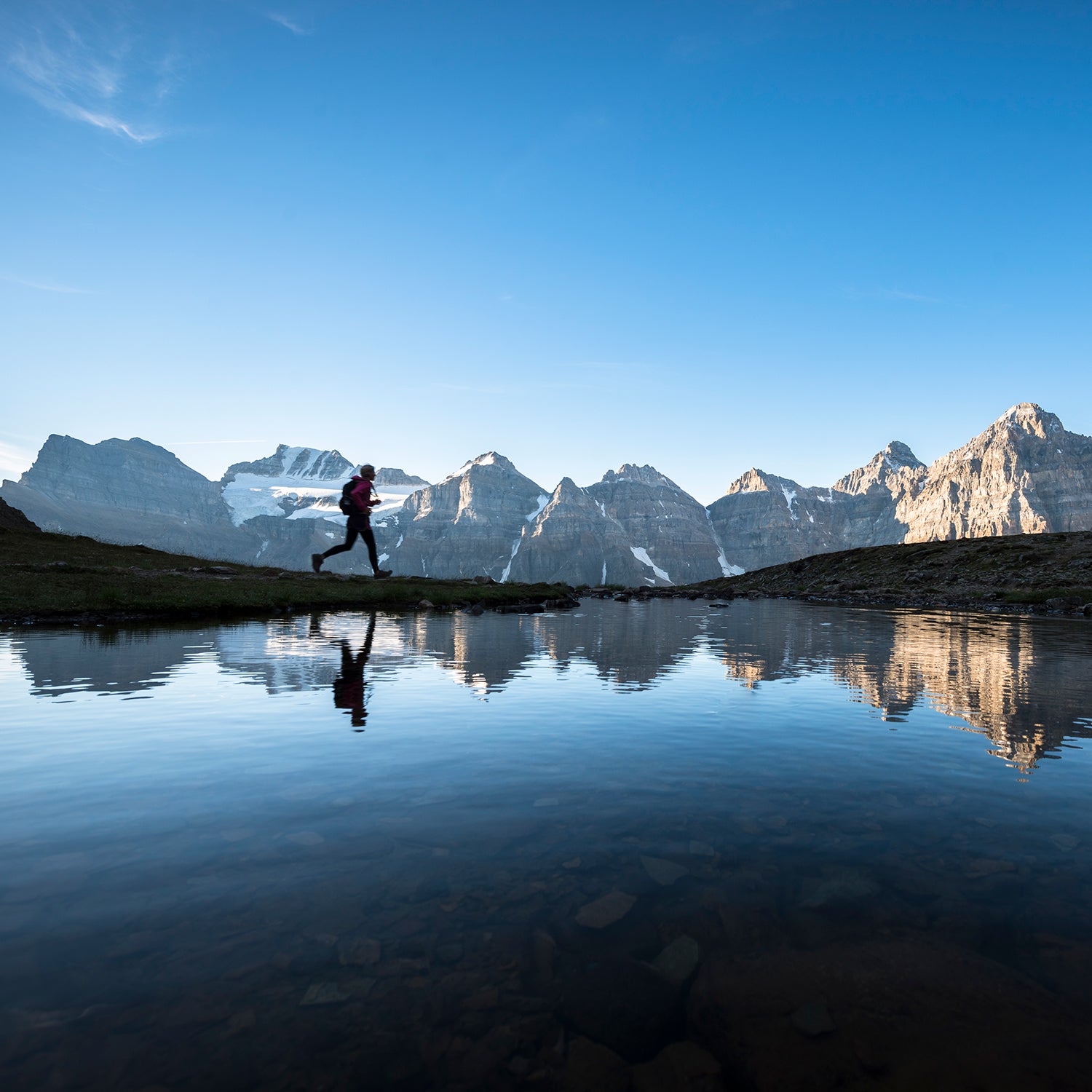If you thought the National Park Service’s centennial was a big deal, just wait for Canada to celebrate its 150th anniversary. Parks Canada is honoring the nation’s sesquicentennial by offering free entry to all of its national parks, national historic sites, and national marine conservation areas for the entire year.
Because nobody wants to deal with waiting in line to access the outdoors, you can order your complimentary before you go, which covers up to seven people in one vehicle. Once you have that, prioritize these seven parks, which feature some of the country's most beautiful landscapes and wildest adventures.
Waterton Lakes National Park
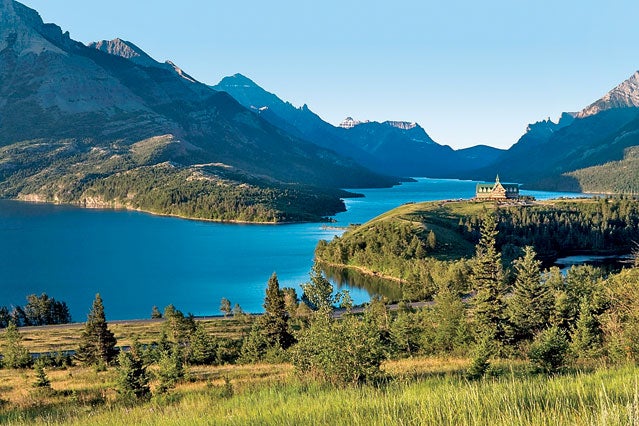
Admirers of who can’t stand the crowds should head for , a 2.5-hour drive from Calgary, on Alberta’s southern border. The smaller parcel shares a border with Glacier—together, the two form the world’s first —but sees about a quarter of Glacier’s 2.3 million annual visitors. Fewer people means more room for you to explore this portion of the , a diverse ecosystem where Alberta, British Columbia, and Montana converge.
���ϳԹ���rs should plan to hike the 10.7-mile (round-trip) Crypt Lake Trail, which National Geographic named one of the world’s most thrilling hikes. After scrambling through a natural tunnel and passing over narrow, exposed ledges, you’ll enjoy views of four towering waterfalls and a glistening alpine lake. Spend the night at one of the park's three vehicle-accessible campgrounds, or take your pick from the eight lodges and B&Bs located within the park’s borders. We suggest the historic , opened during Prohibition, which has held onto its charm since it served as an across-the-border getaway for intemperate Americans.
Pacific Rim National Park Reserve
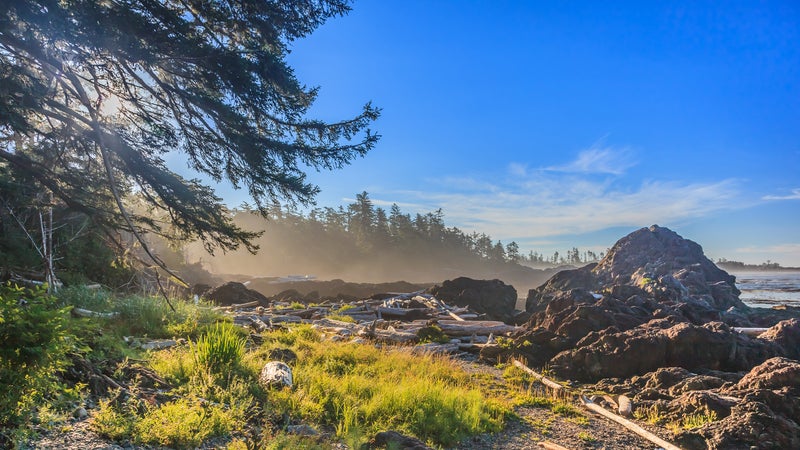
Surfing is the main attraction at , on the west coast of Vancouver Island. Wave riders should point their boards toward Long Beach’s ten miles of break, accessible year-round for experts, while kayakers can head to the Broken Group Islands, a vast collection of islands and tidal pools filled with shipwrecks and diverse marine life. Expect to be greeted by a Tseshaht First Nation beach keeper before you set up camp. Seven of the islands have backcountry campsites that are accessible only by boat.
For those who prefer to stay dry, the 47-mile (one-way) is a challenging hike along trading routes used by First Nations tribes. It takes an average of five to seven days to complete and is open May 1 through September 30. Less die-hard hikers can access a newer midpoint entrance for a shorter taste of the trail.
Grasslands National Park
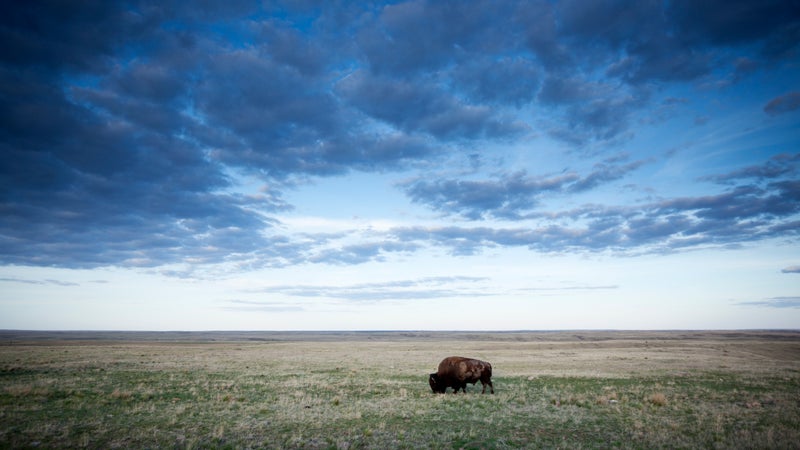
Rippling seas of grass, a 70-mile butte, and the changing colors of exposed sedimentary rock set the scene in this Saskatchewan park. It’s the perfect venue for your next family trip: kids will love seeing the area’s wildlife, dinosaur bones, and First Nations encampments.
Four tents were recently built in the Frenchman Valley Campground. Each cabin-meets-tent setup can sleep up to six people and includes a table, seating, an outside fire pit, and nearby vault toilets. (Reservations are required; $90 per night.) ($45 per night) are also available at two separate campgrounds.
In the morning, take the 2.5-hour, self-guided Ecotour Scenic Drive. Keep your eyes peeled for plains bison, swift fox, and black-footed ferret. All three species once faced extinction but have been successfully reintroduced to their natural habitats. Then spend the afternoon looking at dinosaur bones in the Killdeer Badlands area, the site of one of the first dinosaur fossil discoveries in Canada. Before you call it a night, make sure to look up: is a designated and boasts the darkest night sky in the entire country. If you’re lucky, the aurora borealis might make an appearance. Chat with park staff to determine the best viewing spots on the evening you’re visiting.
Nahanni National Park Reserve
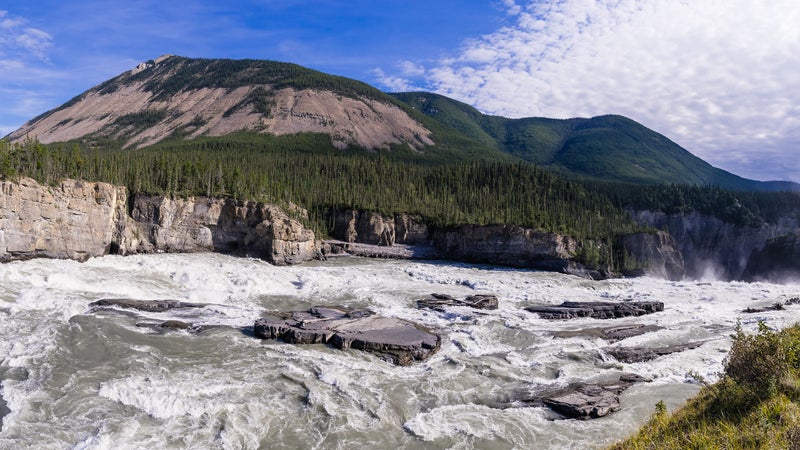
Whitewater is the focus at this remote park that covers more than 18,000 square miles in the southwest corner of the Northwest Territories. The Naha Dehé (South Nahanni River) weaves through four of Canada’s deepest canyons and flies over Nailicho (Virginia Falls), whose water pounds down from twice the height of Niagara Falls. The best way to see it is on a multiday float. Only three guiding companies are licensed to offer trips within the park; check out for one- to three-week rafting, canoeing, and hiking excursions along the Nahanni. Those who prefer a less-intense workout can hop on a flightseeing tour to the falls and Glacier Lake.
Water isn’t the only draw at . Climbers will want to focus on conquering the granite of Mackenzie Mountains’ Ragged Range. Fishing enthusiasts can cast for 16 different species. Hikers will enjoy heli-hiking or exploring unofficial paths. (There are no formal trails in the park, but clear routes can be found to the aptly named Secret Lakes.) In the evening, relax tired muscles at the Kraus Hot Springs. Plan to visit the park between June and August to avoid spring flooding and severe late-summer weather.
Pukaskwa National Park
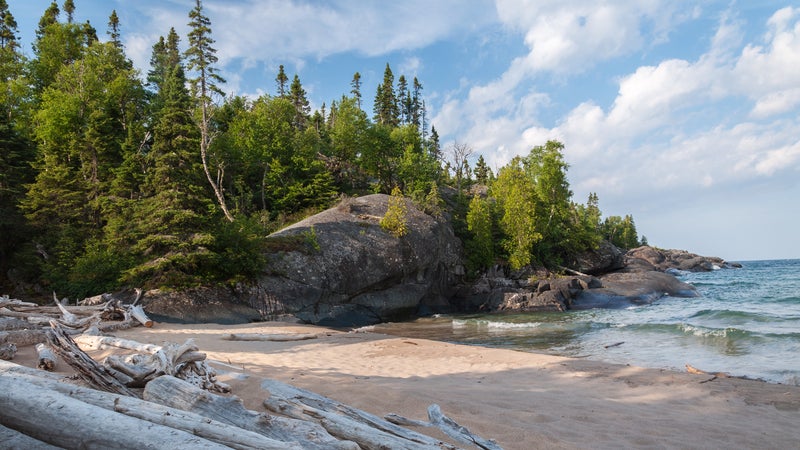
Lace up your hiking boots to explore (pronounced “puck-a-saw”), Ontario’s only wilderness national park. The Coastal Hiking Trail, part of the Trans-Canada Trail, follows 37 miles of Lake Superior coastline, crossing cobblestone beaches, rocky creeks, and boreal forests. All designated backcountry campsites include an outhouse, bear box, and fire pit. The recent addition of the Mdaabii Miikna Trail means those squeezing in a shorter trip can see many of the same views and topography in half the time. The first leg of the Coastal Hiking Trail also doubles as a challenging 11-mile day hike to the White River Suspension Bridge, a swaying expanse overlooking Chigamiwinigum Falls.
Most park activities start from the 67-site Hattie Cove Campground, which also permits winter camping. From there, a short walk across the boardwalk takes visitors to Horseshoe Beach, the perfect spot for an afternoon picnic and chilly swim before calling it a night.
Mingan Archipelago National Park Reserve
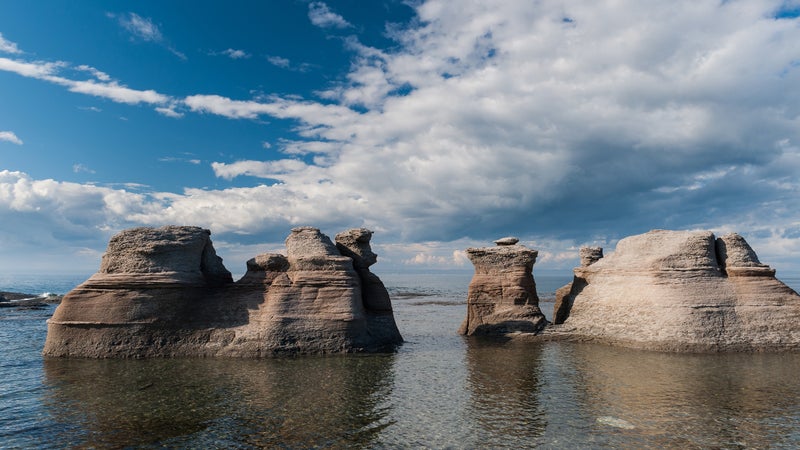
A visit to feels like a true escape, maybe because the park is accessible only by boat or other water vehicle. Registered marine transportation companies typically operate from mid-June to early September, so plan on visiting then unless you have access to your own ride.
The sea is king at this Quebec park, composed of more than 1,000 islands, reefs, and islets. Here, you’ll share company with the sea’s inhabitants—seabirds, puffins, dolphins, seals, and whales all call the area home—while taking in the monoliths, cliffs, and grottoes from a kayak. You don’t have to stay overnight—tours via water taxi can be as short as three hours—but if the secluded vibe lures you in, you have two options: camping at one of 42 undeveloped sites or treating your crew to a night (or two or three) in a lighthouse. features sweetly appointed rooms (starting around $180 per night per person) named after notable people or events in the island’s history, high-end local cuisine, and expansive views of the Gulf of St. Lawrence.
Gros Morne National Park
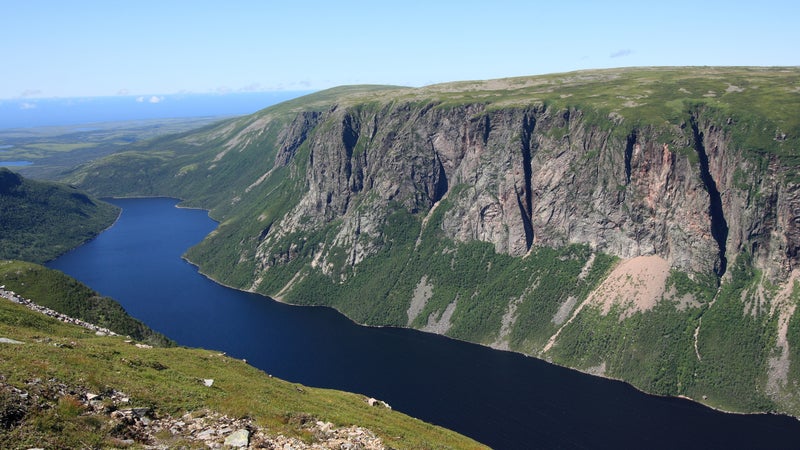
You’d probably never think of visiting this island (Newfoundland) and mainland (Labrador) combo were it not for . But this is where you can “Hike to the Top of the Bottom of the Earth”: a seven-mile, full-day trek that walks through 500 million years of history to the top of Tablelands, remnants of an ancient ocean floor. offers guided hikes for $125 per person. If you choose to traverse it on your own (the Tablelands Trail app is like taking an expert with you), opt for the Trout River Pond Trail, which Parks Canada calls “the path less traveled.”
To view the park’s ancient rock formations from below, plan a DIY sea kayak excursion along the volcanic cliffs shooting up along the coastline that runs from Trout River to Bonne Bay. A number of fishing and logging communities are located along the park as well. Starting up a conversation with that lobster fisherman you come across might just snag you an invitation to whatever is going on in town that evening.


